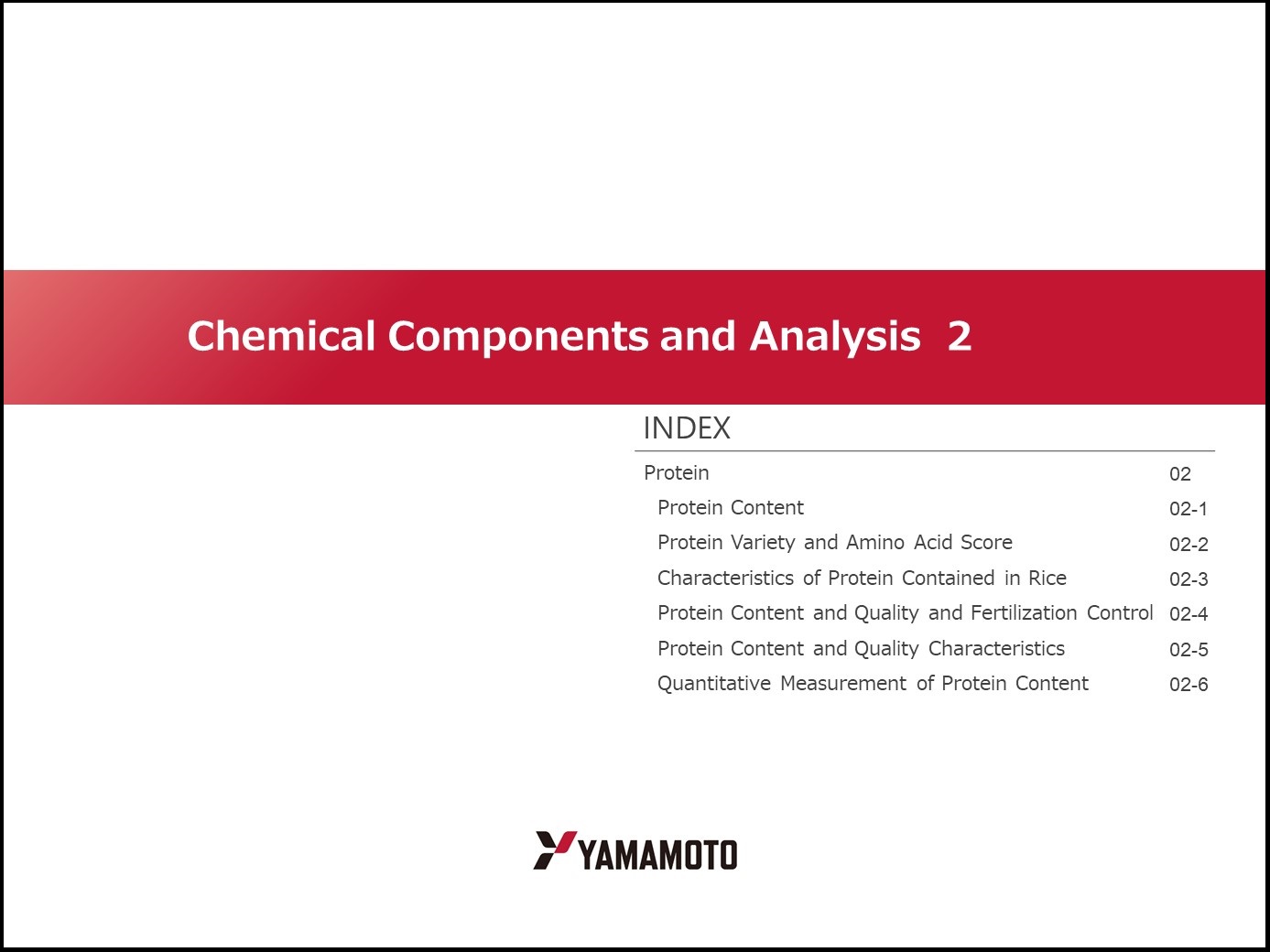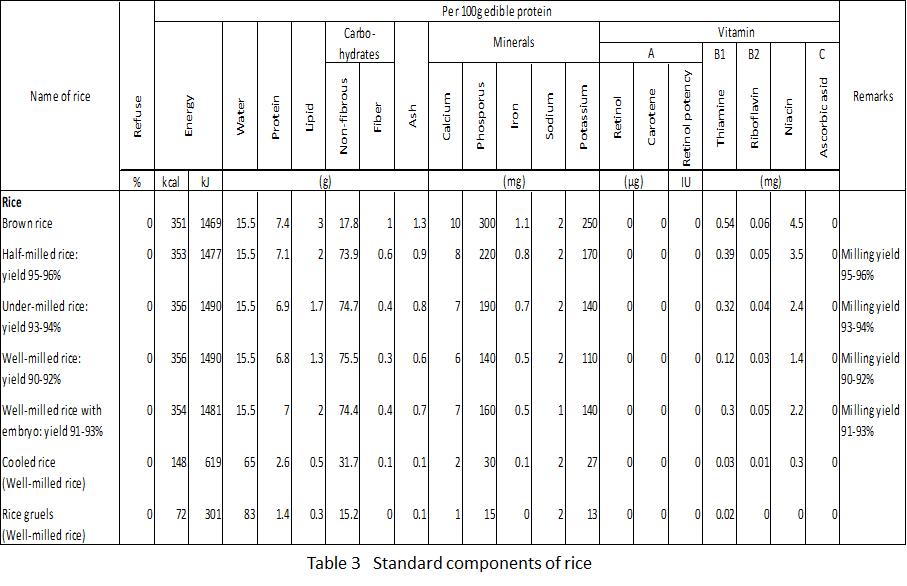59. Chemical Components and Analysis 2
- INDEX -
Protein
Protein Content
Protein Variety and Amino Acid Score
Characteristics of Protein Contained in Rice
Protein Content and Quality and Fertilization Control
Protein Content and Quality Characteristics
Quantitative Measurement of Protein Content
Protein
Protein Content
According to an investigation conducted by International Rice Research Institute (IRRI), the protein content of brown rice grains from approximately 8,000 of rice collected for investigation were distributed between 5~17% (on a wet basis) whose mean value was 10.6%.
On the other hand, according to the 4th edition of the Standard Table of Food Composition in Japan, Japanese rice has a 7.4% protein content on average for brown rice and 6.8& for milled rice (Table 3).
Protein Variety and Amino Acid Score
According to Osborne, protein can be grouped based upon differences in solubility into albumin (pure water soluble), globulin (saline solution soluble), prolamin (alcohol soluble) and glutelin (alkali soluble). It is generally said that cereal protein is dietetically inferior to animal protein in that it lacks lysine, an essential amino acid. The main reason is said to be that, as with wheat and maize, their main protein is prolamin (such as gliadine for wheat and zein for maize), which contains only a small amount of lysine. In contrast, rice differs from other cereals in that its main protein is glutelin (oryzenin). Although its first limiting amino acid is still lysine, its amino acid score, which is used as an idex for the nutritive value of protein, is 61, much better than that of wheat (medium flour, 39) and maize (corn grits,31) and is one of the better proteins with a superior amino acid composition than other cereal proteins. (Amino acid score is obtained by multiplying the content of the first limiting amino acid in a food protein by 100, then dividing it by the concerned amino acid content in the essential amino acid pattern of human according to FAO/WHO).

